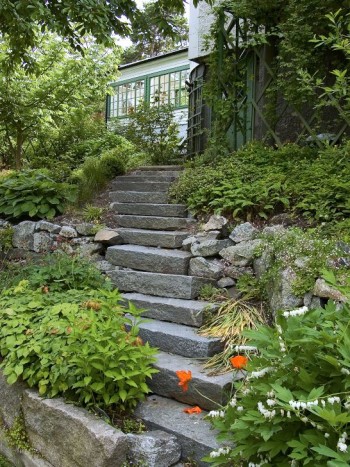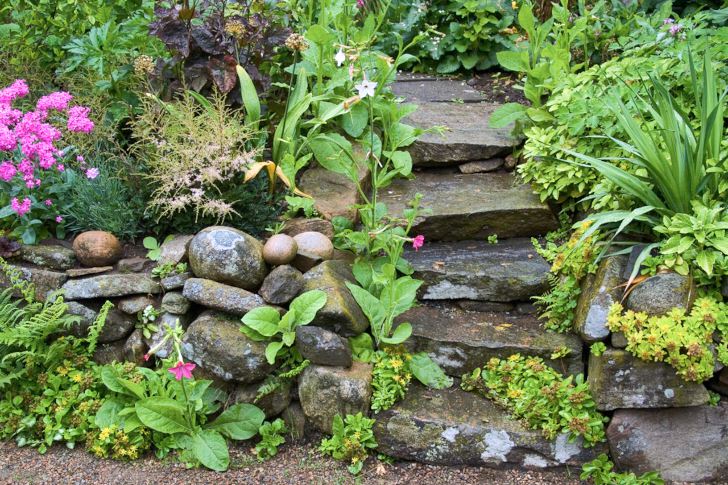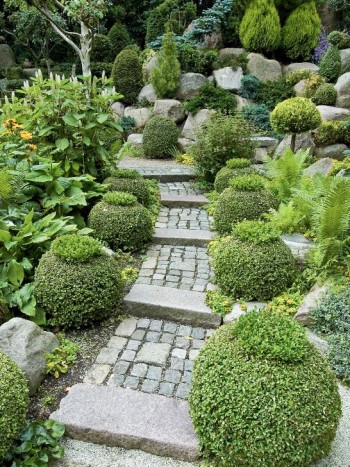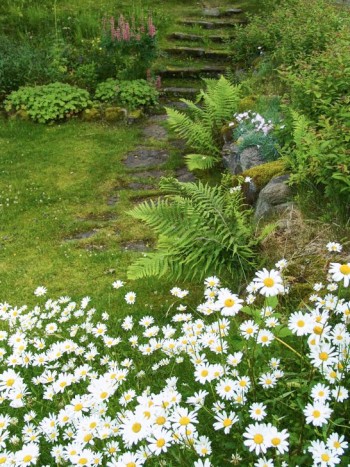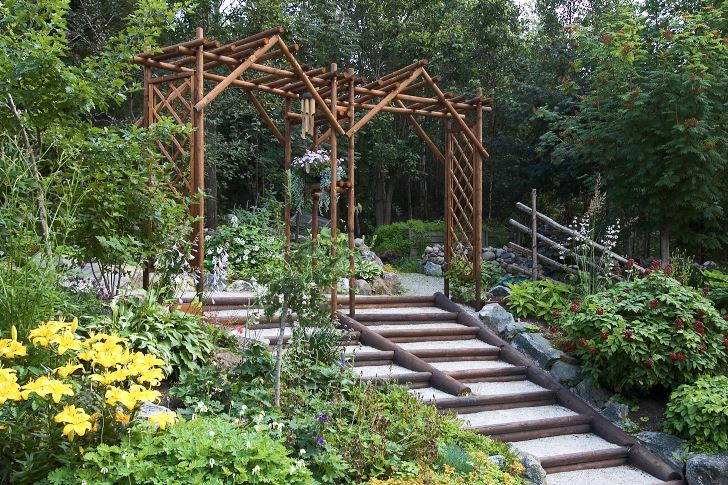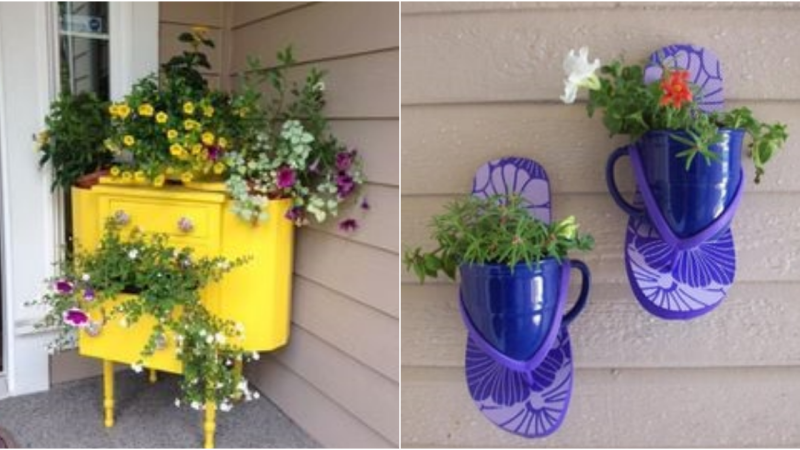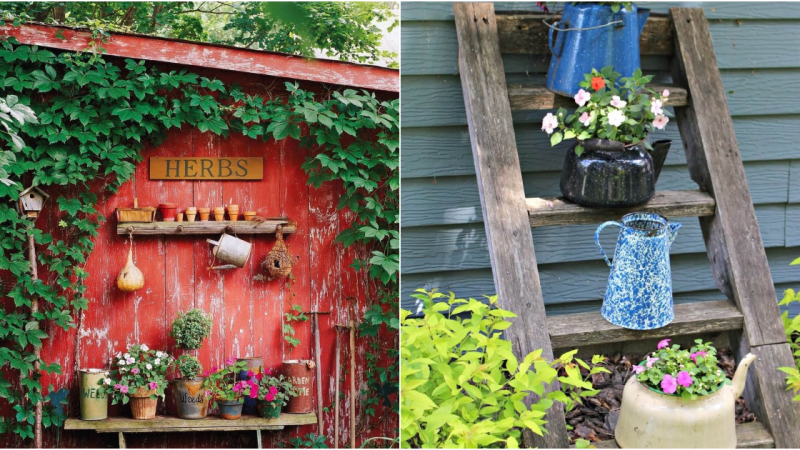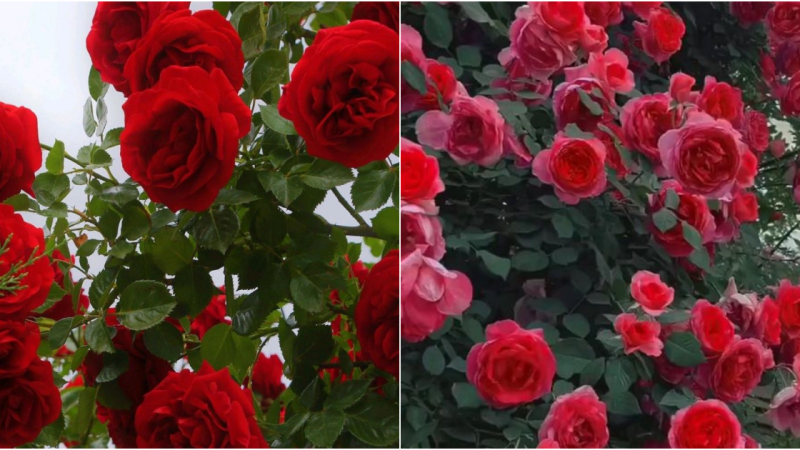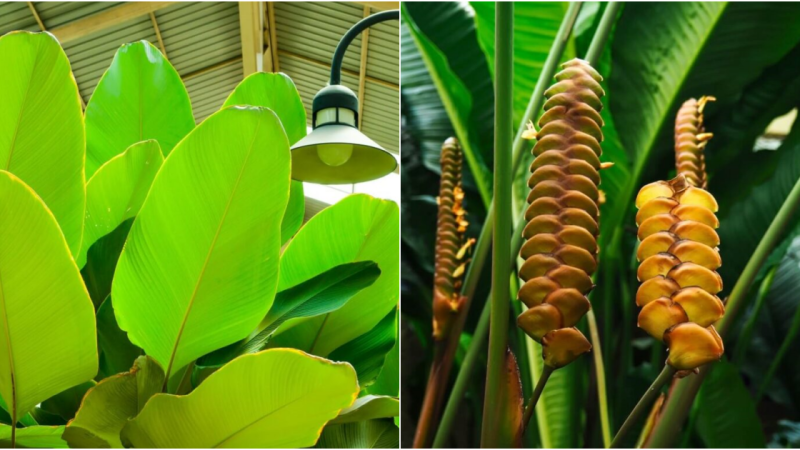The Beauty of Staircases in the Garden
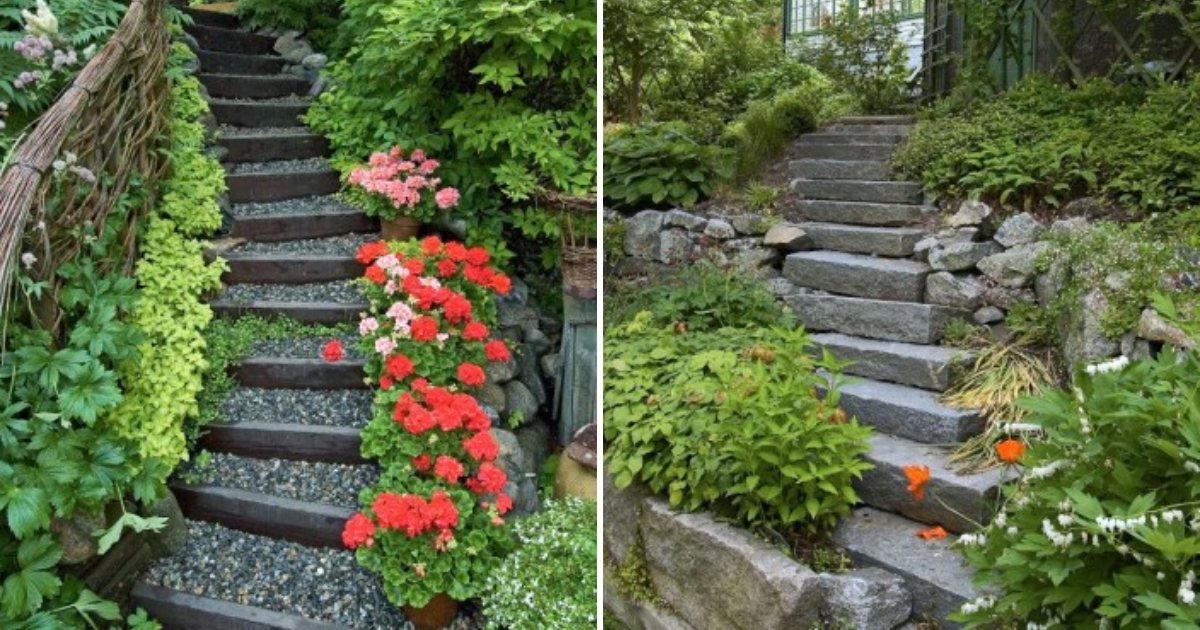
A staircase is an integral part of the overall design of a garden. As it forms a natural transition between different spaces, it has a direct impact on the layout.
A gracefully curved staircase made of wood and gravel welcomes visitors to the second terrace level at Pilgården in Sundsvall. Surrounding it are rowan spirea, mock orange, pale yellow rosemary willowherb, and abundant pale pink starflower. Along the edges, pots with red and pink geraniums stand, while a woven willow railing provides support for the hand.
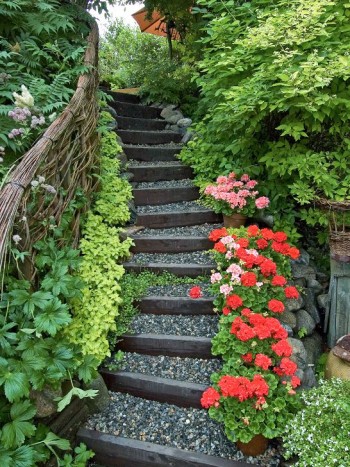
By zigzagging the staircase across the slope, a steeper inclination can be achieved compared to a straight staircase. The configuration of the stairs offers views from various perspectives.
A diagonally placed staircase, as seen here at Anna-Lena Wibom’s residence in Lidingö, is both practical and aesthetically pleasing, especially when a straight staircase cannot accommodate a steep incline. Plants cascading from the sides soften and conceal the edges of the steps.
The informal character of the uneven stone staircase is enhanced by self-sown annual tobacco flowers growing between the joints towards the stone wall, as well as perennials and self-seeding annuals creeping in from the sides.
Pathways of stairs are visually appealing and suitable for gentler slopes. In Hviids Garden in Fyn, the rounded shapes of boxwood spheres contrast with the horizontal lines of the steps, allowing the gaze to sweep from side to side and visually expand the space.
A few informal stone steps nestled among natural stones, grass, moss, and perennials create a charming rustic ambiance. This image is from Tallnäs Estate near Skillingaryd in Småland.
An elegant staircase in Asian style facilitates the passage between two levels in Margareta Borgström’s garden in Hortlax, Norrbotten. A self-crafted double gateway marks the beginning of the staircase on the upper level, adding a distinctive character to the stairs.

